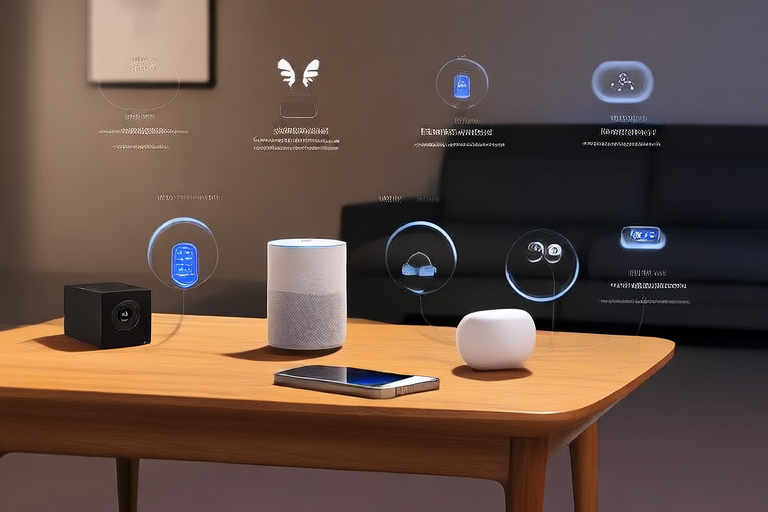The Ultimate Guide to Building a Seamless Smart Home Ecosystem
Introduction
A smart home ecosystem refers to a network of interconnected devices that communicate with each other to automate and enhance various aspects of daily living. From controlling lights and thermostats to securing your property and managing energy consumption, a well-designed smart home can significantly improve convenience, efficiency, and security. The rise of affordable and accessible technology has made it easier than ever to transform any house into a futuristic haven. Whether you’re looking to simplify routines, save money on utility bills, or boost your home’s safety, building a seamless smart home ecosystem is a worthwhile investment.
Planning Your Smart Home
Before diving into the world of smart devices, it’s crucial to plan your approach carefully. Start by assessing your needs: What problems do you want to solve? For instance, are you tired of manually adjusting the thermostat or forgetting to lock the front door? Next, set clear goals for your smart home. Do you prioritize energy savings, enhanced security, or sheer convenience? Once you have a vision, create a roadmap outlining which areas of your home you want to upgrade first and how they will integrate over time. This structured approach ensures you don’t overspend on unnecessary gadgets and helps you build a cohesive system.
Choosing the Right Hub or Platform
The foundation of any smart home ecosystem is a central hub or platform that acts as the brain of your setup. Popular options include Apple HomeKit, Google Home, and Amazon Alexa. Each has its strengths and weaknesses:
- Apple HomeKit: Known for its strong focus on privacy and seamless integration with Apple devices. However, it has limited compatibility with non-Apple products.
- Google Home: Offers excellent voice recognition and works well with Android devices. It also supports a wide range of third-party devices but may raise concerns about data collection.
- Amazon Alexa: Boasts an extensive library of skills and device compatibility. While highly versatile, some users worry about Amazon’s data practices.
Your choice should align with your existing tech ecosystem and personal preferences regarding privacy and usability.
Essential Smart Home Devices
To get started, consider investing in these must-have devices:
- Smart Speakers: Devices like Amazon Echo or Google Nest serve as both hubs and assistants, enabling voice control and playing music.
- Smart Lighting: Replace traditional bulbs with smart ones (e.g., Philips Hue) to schedule lighting, adjust brightness, and even change colors.
- Smart Thermostats: Products like Nest or Ecobee help optimize heating and cooling, reducing energy costs while maintaining comfort.
- Security Cameras: Install indoor and outdoor cameras (e.g., Ring or Arlo) to monitor your property and receive alerts for suspicious activity.
- Smart Door Locks: Enable keyless entry and remote access through locks from brands like August or Schlage.
- Smart Appliances: Upgrade to connected refrigerators, washing machines, or ovens for added functionality and monitoring capabilities.
Each of these devices contributes to creating a more convenient and efficient living space.
Interoperability and Compatibility
One of the biggest challenges in building a smart home is ensuring all devices work together seamlessly. To achieve this, check compatibility before purchasing new gadgets. Look for devices that support common protocols such as Zigbee, Z-Wave, or Wi-Fi, as these ensure better communication between products from different manufacturers. Additionally, many platforms offer compatibility lists detailing which devices integrate smoothly. If possible, stick to one brand or ecosystem to minimize complications, but don’t hesitate to mix and match if needed—just verify interoperability beforehand.
Setting Up Automation Routines
Automation is where a smart home truly shines. By setting up routines, you can streamline tasks and enjoy hands-free operation. Here are some practical examples:
- Schedules: Program lights to turn on at sunset and off at bedtime.
- Voice Commands: Use phrases like “Good morning” to trigger actions like raising blinds and brewing coffee.
- Geofencing: Automatically adjust settings when you leave or arrive home, such as arming the security system or turning on the AC.
- Energy Savings: Set thermostats to lower temperatures during winter nights or reduce lighting usage during daylight hours.
Experiment with different automations to find what works best for your lifestyle.
Ensuring Privacy and Security
While smart homes offer numerous benefits, they also come with risks related to privacy and cybersecurity. To protect your system:
- Use strong, unique passwords for all accounts and devices.
- Enable two-factor authentication wherever possible.
- Regularly update firmware to patch vulnerabilities.
- Limit data sharing permissions within apps and services.
- Consider using a dedicated guest network for your smart devices to isolate them from sensitive information on your primary Wi-Fi.
By following these best practices, you can safeguard your smart home against potential threats.
Scaling and Expanding Your Ecosystem
Building a smart home doesn’t happen overnight—it’s a gradual process. Start small by addressing immediate needs, then expand as your budget allows. Prioritize adding devices that complement your existing setup and enhance overall functionality. For example, once you’ve mastered smart lighting, consider integrating motion sensors or motorized window shades. Keep in mind that scalability depends on choosing flexible platforms and avoiding overcrowding your network with too many devices at once.
Troubleshooting Common Issues
Even the most meticulously planned smart homes encounter hiccups. Here are solutions to common problems:
- Device Connectivity: Ensure devices are within range of your router or use mesh networks to extend coverage.
- Inconsistent Performance: Reset devices or check for firmware updates to resolve glitches.
- Voice Command Failures: Rephrase commands or retrain your assistant to recognize specific accents or phrasing.
- App Crashes: Clear cache or reinstall apps to fix software issues.
- Interference: Avoid placing devices near appliances that emit electromagnetic signals, such as microwaves.
Persistence and patience go a long way in overcoming technical obstacles.
Conclusion
Creating a seamless smart home ecosystem requires careful planning, thoughtful selection of devices, and ongoing maintenance. By starting with a solid foundation, prioritizing compatibility, and leveraging automation, you can design a system tailored to your needs. Remember to address privacy concerns and scale your setup gradually to avoid overwhelm. With dedication and the right approach, your smart home can become a transformative addition to your life, offering unparalleled convenience, efficiency, and peace of mind.


